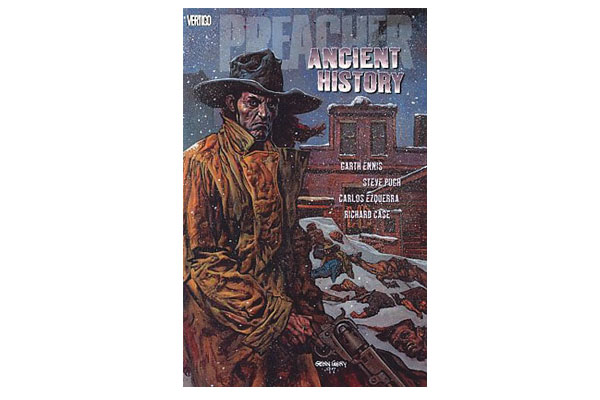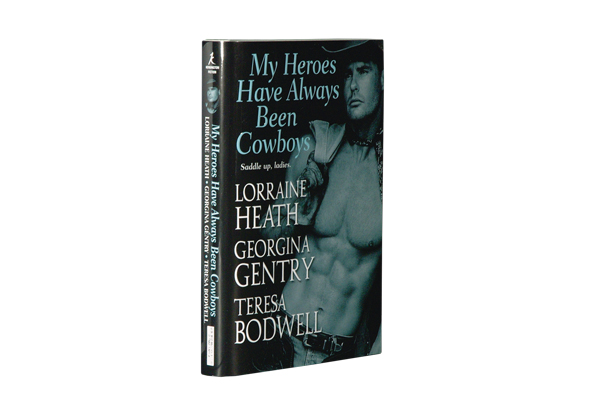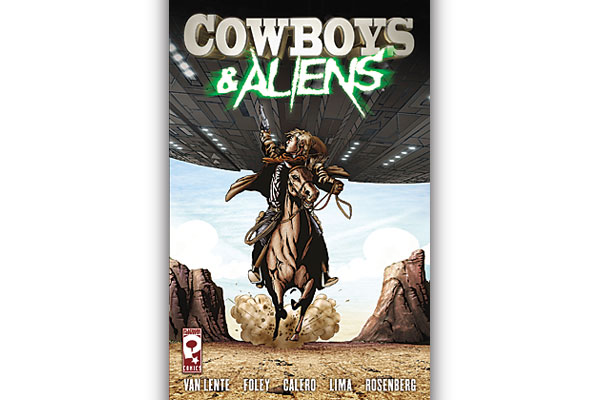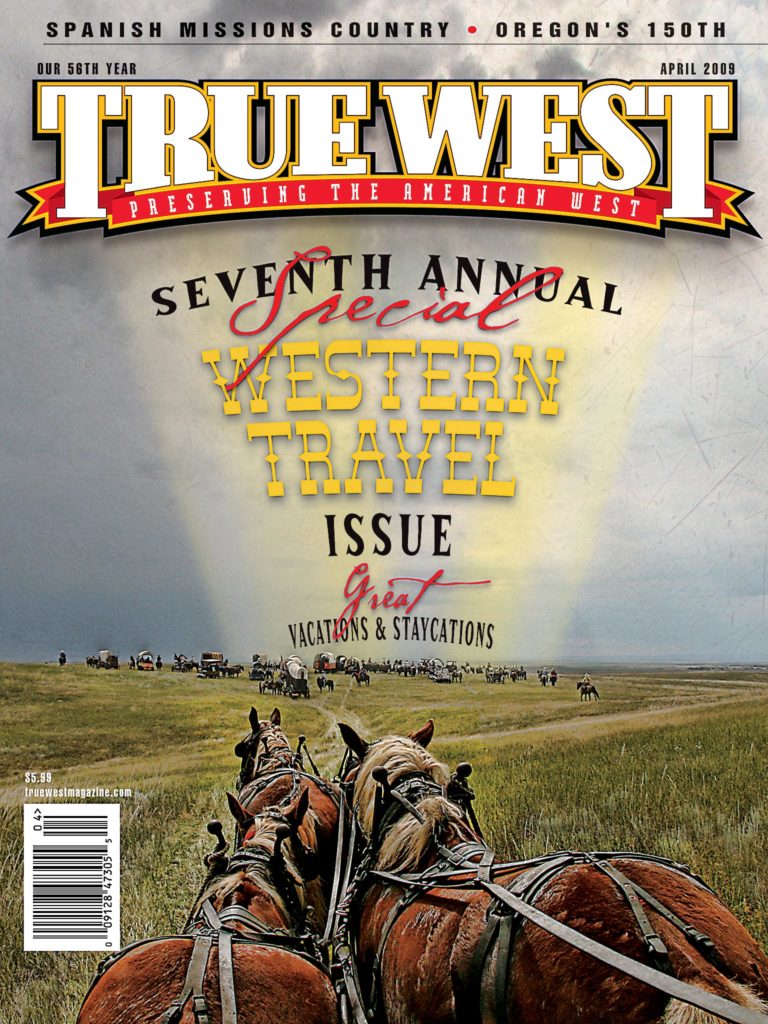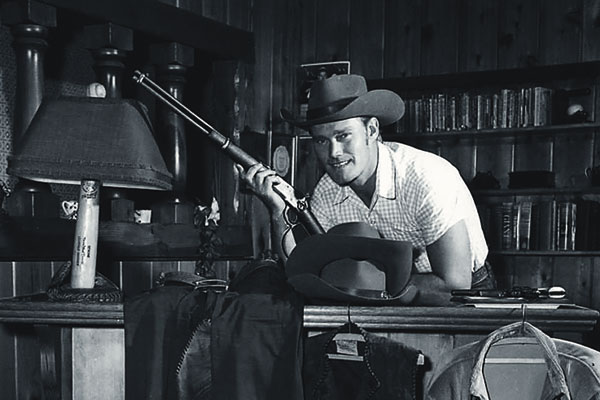
Most movie cowboys were not real cowboys.
The idea of people such as Dean Martin or John Candy playing rough, tough cowboy heroes borders on the ludicrous. But many cowboy stars were heroes in real life and proved it on the battlefield. After World WarII, these heroes went back to Hollywood or took up jobs in the blossoming industry of TV. There they rode the lonesome range and the high rimrock of the Old West, and tried their very best to forget the hell of combat.
Only one in 12 soldiers actually saw combat though. Chuck Connors, of The Rifleman, was a tank instructor at West Point; Hugh O’Brian, of Wyatt Earp, became the youngest DI (drill instructor) in Marine Corps history; and Richard Boone, of Have Gun, Will Travel, was a rear gunner on Dauntless and Avenger dive bombers, though late in the war.
Many other movie and TV cowboys, some famous, some not, served their country. Some started out as cowboys, while others grew into the act. But overall, they fought and served like an entire generation of veterans and they deserve to be honored and remembered as they ride across the screen.
More than 600 actors served in various capacities in the war—I’m currently writing a book on movie stars who served in WWII—so here is just a sample of veterans most known for their cowboy roles.
Louis Burton Lindley Jr.
One movie cowboy who actually was a cowboy was Louis Burton Lindley Jr., a top competitor and clown on the rodeo circuit. When he enlisted in the Army, he wrote his occupation as “rodeo,” which someone misread to be “radio.” Thus he spent his entire service at a radio station in the Midwest. After his service, he used his wrangling skills to land a place in Hollywood. Asked about his job change, he replied, “Ain’t never had one dang camera run over me.” For a stage name, he remembered the advice given him by an old hand about how much money he might make if he stayed in the rodeo: Slim Pickens. He acted in Westerns such as One-Eyed Jacks and Tom Horn, and is best known for his role in Blazing Saddles.
James Arness
More than a decade before his Gunsmoke role as U.S. Marshal Matt Dillon, in December 1943, James Arness was part of the 2nd Platoon, E Company, 2nd Battalion, 7th Regiment, Third Division, bound for Anzio. They landed on the Red and Green sections of X-Ray Beach near Nettuno. As the tallest man in the outfit, he was sent down the ramp first to see how deep the water was there.
Anzio had taken the Germans completely by surprise, and the landings were uncontested. Nine days later, the Wehrmacht had recovered, stopped the advance, surrounded the beachhead and were offering the Allies fierce resistance. In one of his first actions, Arness’s outfit advanced on a farmhouse when the Germans opened fire. He dove and flattened out in a shallow ditch while a machine gun was brought up for support. No sooner had it started firing back, than it was bracketed by mortar rounds. The man next to him had his face blown off, splattering Arness. Horrified, he froze. Then he broke and ran, until his sergeant finally screamed, “Arness, you son of a bitch, get down in that ditch or I’m gonna kill you,” Arness remembers.
On February 1, 1944, Arness was point man for a night patrol. It was so dark, he couldn’t see his own feet. Then he heard the Germans about 50 feet ahead. He and the 40 or so men of his platoon had stumbled upon two German machine guns supported by about 15 infantry. He heard a shout, and the Germans opened fire. Arness was hit in the lower right leg, but he managed to leap a row of grapevines anyway and rolled into a ditch. A nearby grenade blast lifted him right off the ground. The pain was excruciating. For the next 18 hours, he lay in a freezing stream, listening to the wounded moan.
When litter bearers found him and began carrying him back, artillery fire caused them to drop the stretcher. He rolled downhill into another stream, yet he was so full of morphine, he didn’t feel a thing. From the collection area, he was transported by ambulance to the beach, where he was operated on at the 95th Evacuation Hospital. Arness had a ZI, Zone of the Interior wound, which was good for a ticket home.
He ended up in a full body cast at Schick General Hospital in Clinton, Iowa. Eight months later, the cast was removed, but his right leg was five-eighths of an inch shorter than his left, which produced a slight limp. He was discharged January 25, 1945. Jokingly, he would recall his ordeal by saying, “I call my old Purple Heart the Medal for Stupidity, because I forgot to duck when I was supposed to.”
Arness was not the only cast member from the longest-running TV Western in history who served during the War. Clem Fuller, who briefly played the bartender at the Long Branch Saloon, was wounded in the Army. And Chester, the deputy, was played by Dennis Weaver, who served on the Navy’s demonstration track team and established some long standing records when he toured the South Pacific.
Gene Autry
In 1933, John Wayne, a B-movie actor at the time, played a character called Singin’ Sandy in a film titled Riders of Destiny. He was a gunslinger who sang a song before every gunfight. When the singing stopped, the shootin’ started. Since he couldn’t play the guitar and his voice had to be dubbed, Wayne hated the role and refused to sing in any other productions. The audience, however, loved the movie, and Hollywood looked around for another “singing cowboy.” It found Gene Autry.
Autry appeared in serials such as Mystery Mountain (1934) and The Phantom Empire (1935). He acquired a large following and had his own radio show, called The Melody Ranch. On December 7, 1941, the radio show cast was rehearsing before a live audience when the news of the Pearl Harbor attack was announced. Not knowing what else to do, the actors kept to their scripts. The audience sat out the show but left in total silence. America had entered the Second World War.
Republic Pictures had Autry under contract. Since he was the fourth-rated star in Hollywood at the time (right after Spencer Tracy), the company refused to let him enlist. But Autry joined anyway and was sworn in on the air during a Melody Ranch broadcast, on Fourth of July 1942. He was fired immediately, and Republic found another singer, the “King of the Cowboys,” Roy Rogers.
At first, Autry was given an instant commission from Air Force Gen. “Hap” Arnold. But Sen. Harry S. Truman’s Committee had put an end to those types of celebrity promotions, and Autry went through basic training just like everyone else. He was assigned to Special Services and entertained at Army bases, while he continued to broadcast Melody Ranch from Luke Field, west of Phoenix, Arizona. He could have continued this rather soft duty, but he now made only $135 per month as a technical sergeant (his previous salary was $60,000 per month), so he famously said, “For the cut in pay I had taken, I felt I was entitled at least to get shot at.”
Since he already had his private pilot’s license, at his own expense, he took advanced lessons and was promoted to flight officer and finally assigned to the 91st Ferrying Squadron of the 555th Army Air Base Unit of the Air Transport Command. He didn’t ask for any favors, and as far as he knew, he didn’t receive any—though he did remember that he wore cowboy boots with his uniform for the entire war, and no one said a word.
Autry literally flew around the world. He left California for Hawaii, then Australia, up to India where he made the famous trip over the “hump” of the Himalayas to Kunming, China, and back again. He carried fuel, ammunition, guns, a few cases of scotch and lots and lots of “Spud” cigarettes. He was ordered back across India, where he stopped in Calcutta long enough to buy a freshly killed python skin so he could make it into boots. He flew on to the Middle East. In Haifa, he purposely developed a few days of engine trouble so he could tour the Holy Land; in Cairo, he met King Farouk’s belly dancer.
He was back in the states for V-E day, where he might have been released from service due to his age (he was 38), but to ensure that he got no special privileges, he was kept in service. The Army did finally offer him a discharge, but only if he would agree to do a USO tour of the South Pacific upon release. Since he had never been there, Autry jumped at the chance and performed for two more months on various islands until ending the war on Tinian, the home base for the atom bomb.
Back in California, he worked for Columbia for a while and then formed his own production company, buying up the rights to his name and all his own properties. He was one of the richest screen actors of his time, and friend and fellow cowboy Pat Buttram once announced, “Gene Autry used to ride into the sunset; now he owns it.”
Autry and his horse Champion went on to make a long string of Westerns. These days, he is best remembered as a singer with hits such as South of the Border (Down Mexico Way), written by two Englishmen who had never been there, Here Comes Santa Claus, Here Comes Peter Cottontail and most important, Rudolph the Red Nosed Reindeer, the world’s all-time favorite Christmas song, second only to White Christmas.
Wayne Morris
Little remembered now, but famous in his day was Wayne Morris. Raised in Los Angeles, Bert DeWayne Morris was spotted by a Warner Brothers talent scout and began to appear in films such as Beyond the Law, Bad Men of Missouri and Three Sons of Guns. At the time, Warner’s had two B-movie production teams making Westerns, mainly for younger audiences. John Wayne starred in one, and Morris acted in the other. He starred with a number of people, including pinup queen Veronica Lake and a young kid named Ronald Reagan. He also happened to act in 1940’s Flight Angels, in which he was taught to fly.
After enlisting, he found himself in the soon to be legendary Carrier Air Group “Fighting Fifteen.” They were flying the hot, new F6F Hellcat, from the carrier Essex. Under Admiral Spruance, the men left Hawaii in April 1943, bound for the Marianas and the strategic islands of Guam and Saipan. Striking throughout the island chain, Morris got his first confirmed kill by shooting down a big four-engine seaplane, code named Mavis.
A week later, Morris was in the four-plane fighter division that covered a bombing raid on Orate Field, Guam. By the time they reached the target, some of the enemy planes had made it into the air, so four Zeros dove from altitude toward the attacking dive bombers. The fighter cover cut in, and Morris made three passes at the lead plane until it began smoking and broke apart in the sea.
The superb Japanese fighter pilots who had begun the war suffered badly from attrition, since they were expected to sacrifice themselves no less than the common soldier. New pilots received far less training than their predecessors, and the once unstoppable Zero was now more than matched by Hellcats and Corsairs.
So it was with some confidence that Morris’s four-plane division returned from this mission and ran into a single Zero flying about 100 feet above the water. All four Americans attacked and found themselves completely outmaneuvered by this loner. No matter how they attacked, they just couldn’t pin down this guy. Flight Leader Rigg would later write, “He went through every stunt in the books (and some not in) and as far as is known, escaped unharmed.”
On August 26, Admiral William “Bull” Halsey relieved Spruance, and the Fifth Fleet was re-designated the Third. This move helped convince Japanese intelligence that there were two huge U.S. fleets in the Pacific, when in fact there was only one. After returning for re-supply in October 6, 1944, Halsey sailed to support McArthur’s invasion of the Philippines at Leyte. In an effort to confuse the Japanese as to the intended target, Halsey forged west of the Philippines and attacked air bases on Okinawa, Luzon and Formosa.
Morris was flying the protective Combat Air Patrol over the fleet when a group of 30 Japanese planes was spotted on radar. Leaving four planes to guard the crippled carrier Princeton, Morris and two others attacked. Though they greatly outnumbered the Americans, the Japanese fighters immediately formed a defensive Lufbery circle and let their bombers try to sneak in alone. Morris saw his opportunity, broke away and turned toward the bombers. Seeing the Americans turning away, four Japanese fighters broke off from the circle, split into two elements and attacked. Morris reversed and took the lead Zero from the side, knocking him down with only four bursts.
Looking up, he saw two more coming right at him. As they closed at 400 miles an hour, he pulled his nose up, fired … and missed. He turned to try again. The Japanese had also missed, but they snapped around faster than the Hellcat and soon put bullet holes in Morris’s plane. Morris tried to shake them off, but they were too fast for him and stayed on his tail until he was able to slip into a large cloud for cover. Once hidden, Morris made a 360-degree blind turn and emerged exactly where he had entered. He saw the two Zeros circling the exact spot where he should have come out. Since they weren’t expecting him, he was able to pounce on one and shoot it down. He thought of chasing the other, but hydraulic fluid was leaking inside his cockpit and his engine was beginning to cough, forcing him back to the Essex. Morris was discharged three days later.
Fighting Fifteen was now Fabled Fifteen, having destroyed 313 enemy planes in the air and an equal number on the ground, setting a Navy record that still stands today. The fleet produced 26 aces, including Morris, for the loss of 21 pilots. Having earned the Distinguished Flying Cross with three stars and three Air Medals, Morris is credited with seven confirmed kills. Three of his aircraft were so bullet riddled when he landed that they could not be salvaged and had to be pushed overboard.
Returning home, Morris was welcomed by Jack Warner himself. When one of his friends asked if he had been scared, he replied, “I sure was honey. Every time they showed a picture on board, I was scared to death it would be one of mine. That’s something I could never have lived down.”
Audie Murphy
With 39 medals to his name, Audie Murphy was the most decorated American combat soldier of WWII. He not only received all the top medals a U.S. soldier could win at the time, France and Belgium also presented him with honors. His nearly single-handed action at Holtzwihr, France, against six Panzers and two companies of infantry on January 26, 1945, earned him the coveted Medal of Honor, our nation’s highest award.
Coming from Texas, he grew up shooting and saw action with the Third Division in Sicily, Italy, southern France and Germany. Because of his small stature (5’6″), he was first assigned to rear echelon duties, but he kept sneaking off to the front lines in search of combat. He developed a “cold fury” in combat, matched with lightning reflexes and deadly accuracy.
While stalking a sniper in France, he happened to spot the other at exactly the same time. Yet Murphy was able to put two shots into the man’s forehead before the German could even aim. As one of his buddies recalled, “Lord. He was just like a leopard. Fast!”
Another time, in the Vosges Mountains, Murphy was hit in the leg by a sniper. Lying on his back in pain, when the German peeked out for a better look, Murphy fired his carbine, one-handed, and hit the man right between the eyes.
He was also lucky. Of the 235 men in his original company, only two made it through the entire war: Murphy and a supply sergeant. When the soldier returned home, actor Jimmy Cagney invited him to rest at his home, where Murphy soon got a screen test.
Though he did well in the Civil War tale Red Badge of Courage, his best film was To Hell and Back about his own experiences. When a director chided him, he responded, “You forget. I’m working under a handicap: No Talent.”
From there, he made 33 Westerns, most of them bad with names such as Hell Bent for Leather (1960), Six Black Horses (1962) and Gunpoint (1966). Of these, he said, “I guess my face is the same, and so is the dialogue. Only the horses have changed.”
For the rest of his life, Murphy suffered from Post Traumatic Syndrome or “shell shock,” as it was called then. He gave away most of his medals. The veteran-turned-cowboy actor died in 1971 in a plane crash.


